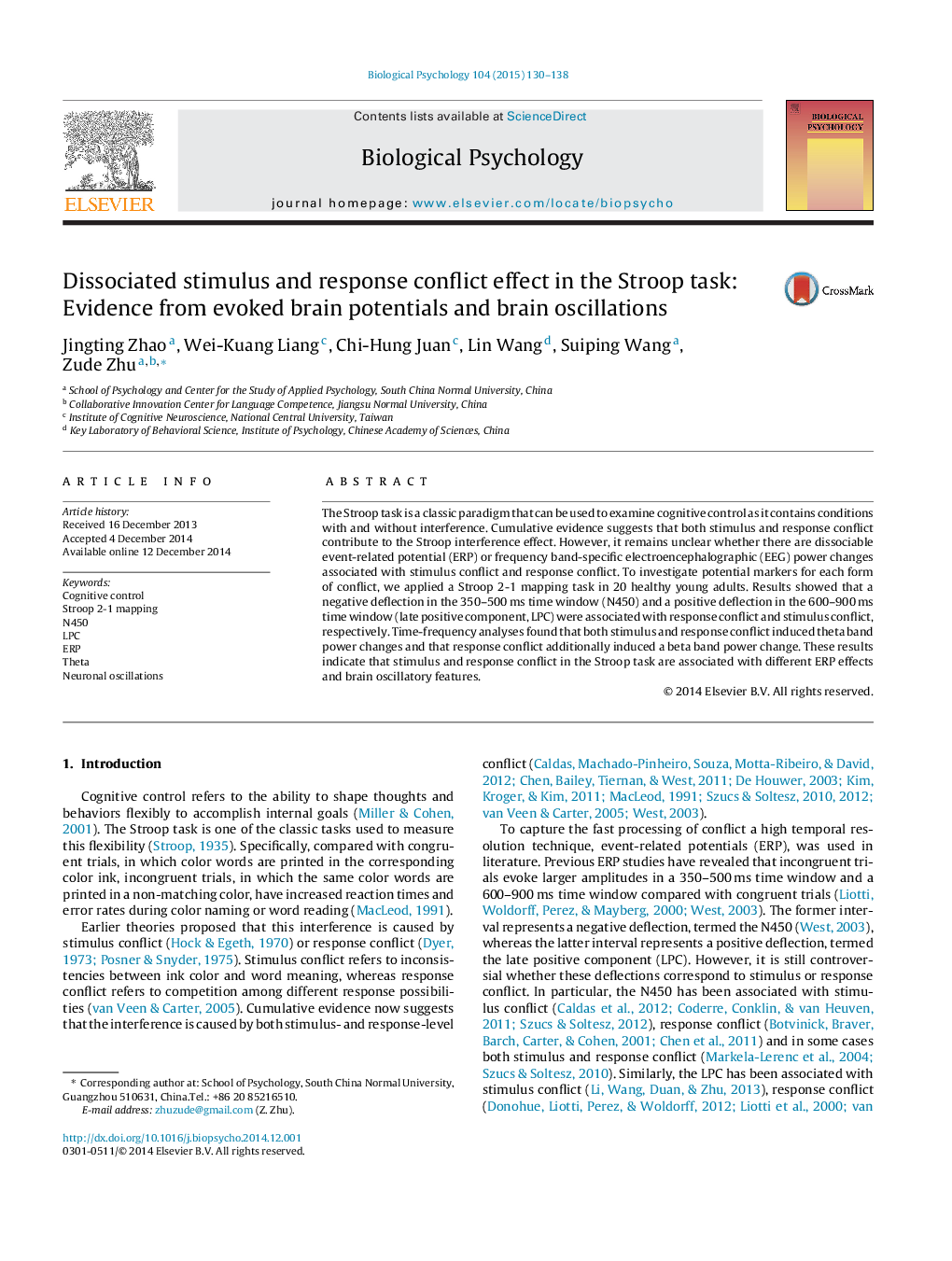| Article ID | Journal | Published Year | Pages | File Type |
|---|---|---|---|---|
| 7278674 | Biological Psychology | 2015 | 9 Pages |
Abstract
The Stroop task is a classic paradigm that can be used to examine cognitive control as it contains conditions with and without interference. Cumulative evidence suggests that both stimulus and response conflict contribute to the Stroop interference effect. However, it remains unclear whether there are dissociable event-related potential (ERP) or frequency band-specific electroencephalographic (EEG) power changes associated with stimulus conflict and response conflict. To investigate potential markers for each form of conflict, we applied a Stroop 2-1 mapping task in 20 healthy young adults. Results showed that a negative deflection in the 350-500Â ms time window (N450) and a positive deflection in the 600-900Â ms time window (late positive component, LPC) were associated with response conflict and stimulus conflict, respectively. Time-frequency analyses found that both stimulus and response conflict induced theta band power changes and that response conflict additionally induced a beta band power change. These results indicate that stimulus and response conflict in the Stroop task are associated with different ERP effects and brain oscillatory features.
Related Topics
Life Sciences
Neuroscience
Behavioral Neuroscience
Authors
Jingting Zhao, Wei-Kuang Liang, Chi-Hung Juan, Lin Wang, Suiping Wang, Zude Zhu,
